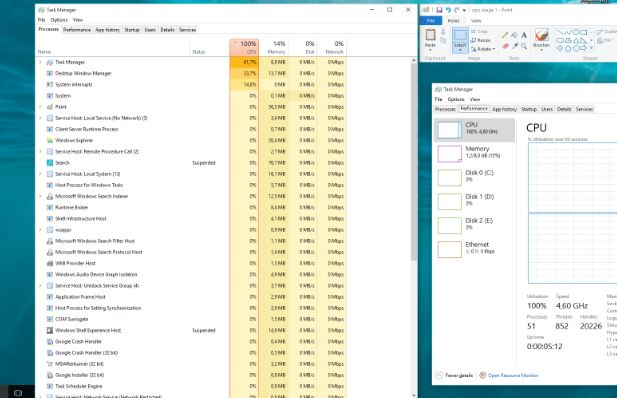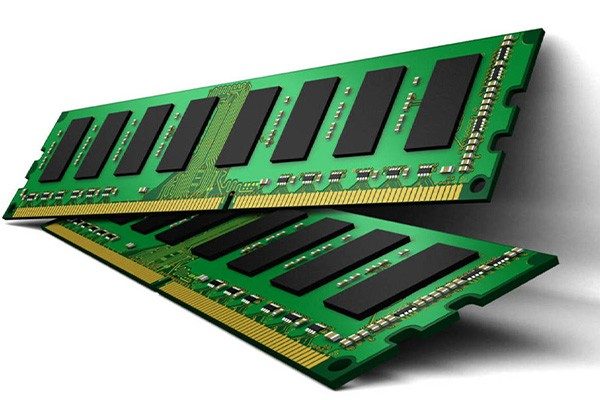If your computer fans frequently hit advanced speeds, it’s a sign that your CPU is fully charged. At the same time, your computer can slow down. It’s annoying, especially if you’re not doing anything.
The CPU (central processing unit), also known as a processor, is the brain of the computer. Like your own noggin, it can be exceeded if bombarded with too many processes, or if a single task requires excessive attention. Just as you can find hard work when overwhelmed, your processor can slow down in front of a search if it is too requested at once.

Normally, this situation can be avoided by staying away from demanding applications, but using the processor can sometimes go out of control because of a bug in a process, like the infamous Wmiprvse.exe. Doing. Fortunately, high CPU usage is usually easy to fix.
Wmiprvse.exe. Doing
This process, which has the full name of Windows Management Instrumentation, is part of Windows and helps organizations to monitor and troubleshoot a large number of systems on a network. It is not uncommon for the process to go out of control.
You can tell if this is your problem by opening the task manager and looking for the Wmiprvse.exe process. If its CPU usage is more than a few percent, and you’re not running a program that would have an impact, it doesn’t work properly.
Microsoft has an official patch that will stop the problem for most users. If this solution does not work, or you can not download it, you can try to restart the service manually. Perform a Windows search for services, and in the window that opens, look for Windows Management Instrumentation. Right click on it, and then select Restart. You can also stop the service entirely if you wish.
Finally, it is possible that the service is a worm or a virus. You should see a single version of the process at some point, and the process should stop if you look at the Services window. If you see two versions of it, or the process will not be stopped, launch a virus scan immediately.
Inactive process of the system
Windows users occasionally encounter a high usage of something called the system’s idle process. This obscure process seems to monopolize all the power of the processor that it can – horrible, right?
In fact, this process is simply a thread that consumes processor cycles, which are not otherwise used. The process is used because of some very esoteric peculiarities in coding, which sometimes makes it better, and even more efficient, for a processor to run something instead of nothing at all. These are not just a Windows thing, but Windows displays the process in the Task Manager, so users see and assume that something is wrong.
This does not mean that you may not experience performance problems when the inactive process of the system is high showing “load”, but the question is elsewhere. In fact, you should expect to see this process report that consumes 95% (or more) of your processor when your PC is idle. If it is not, another thing is consuming CPU cycles without your knowledge.
Too many background processes
A background process is a program that is running on your PC, even if it is not open in a window. A typical computer will have many background processes running at once, as Windows itself requires in order to work. But as you install programs, over the years, you can collect more and more, and eventually overwhelm your PC.
You can check this by opening the Windows Task Manager through a similar search or by running Taskmgr.exe. The Process tab will appear by default, not only in the overall CPU usage but also in the use of each application. You should do so when no other programs are open to avoid confusion. Note the processes that seem to use at least 10% of your processor’s capacity on a regular basis.
Now the output Task Manager and Msconfig open through Windows Search or the Run dialog box. Go to the Startup tab and find the Startup items correlated with the items you have noted. Uncheck them, click OK, and then restart your PC. This will prevent these programs from starting at startup.
It could be an annoying anti-virus
Have you noticed that your computer is getting slow at some seemingly random moments, and these moments often correlate with high disk activity? Problem voting is probably your anti-virus!
An anti-virus program actively scans your threat disk and can consume a surprising amount of CPU load. This is usually not enough to slow down a modern desktop computer or high-end laptop, but older slower systems or can slow down significantly under duress.
Dealing with this problem is easy. Virtually all anti-virus applications come with a programming feature that allows you to adjust when it scans automatically. Change the calendar at a time when you are not in use of the laptop, and you will no longer be bothered.
Or it could be a virus
On the other hand, malicious software could be the source of your problem. A system that is infected can run processes in the background or can attempt to propagate by sending malicious software to others via your email address, your network, or other sources. All this requires a processing power, which can result in mediocre performance.
Checking an infection manually is not easy, and for the beginner, it’s more conjecture than anything else. If you do not have a antivirus, buy one and run it. In fact, you can try several anti-malware tools, because the malicious software that is already installed is advantaged; They may be able to hide from any single anti-virus application.
Once you have found the problem, you can remove it with the anti-virus application that you used to scan.
High CPU usage is a different question
High CPU usage can be hard to track down. While the problems listed here are among the most common causes, but you may find that CPU usage is still a problem even after trying everything from what was suggested above.






